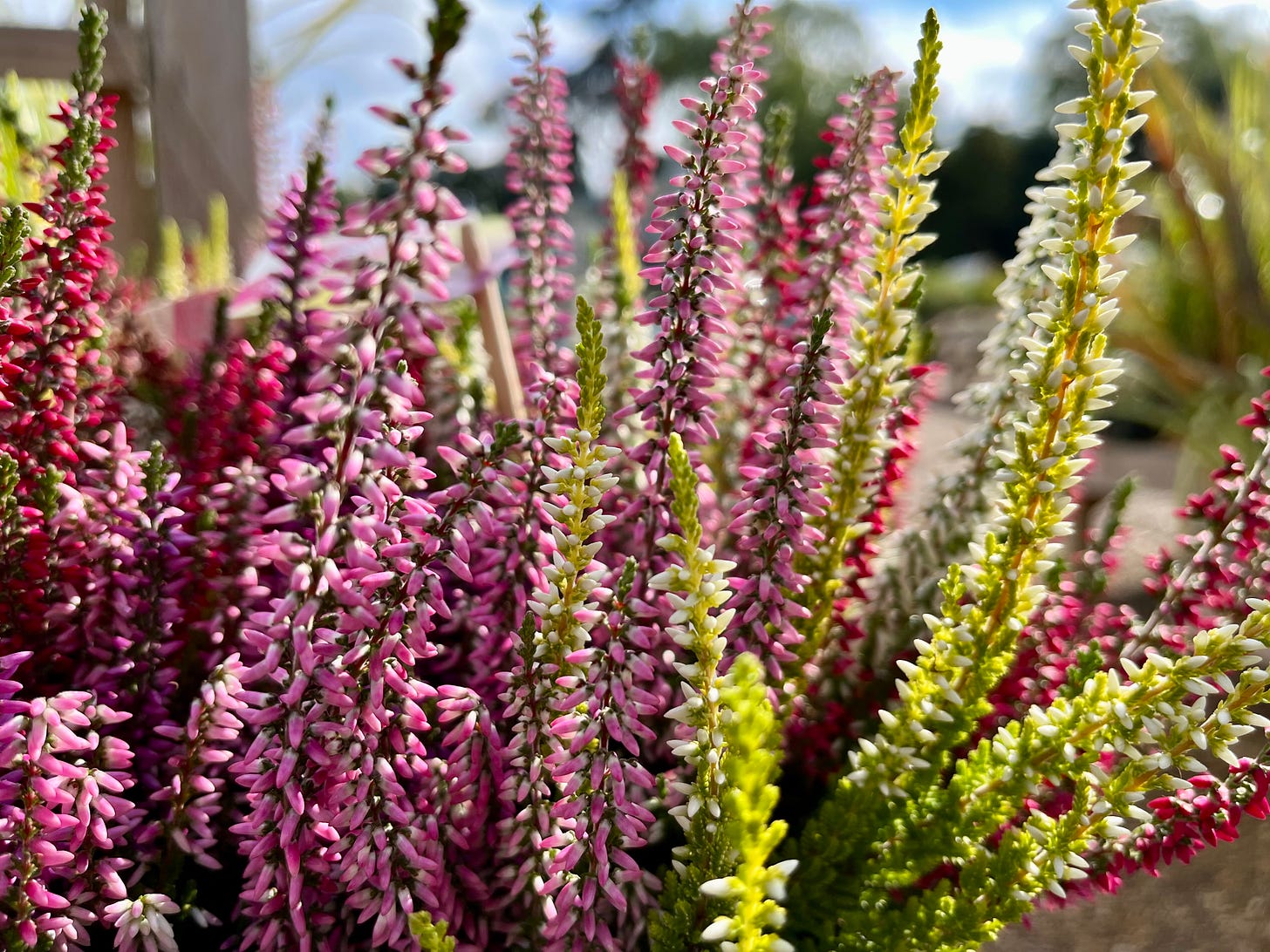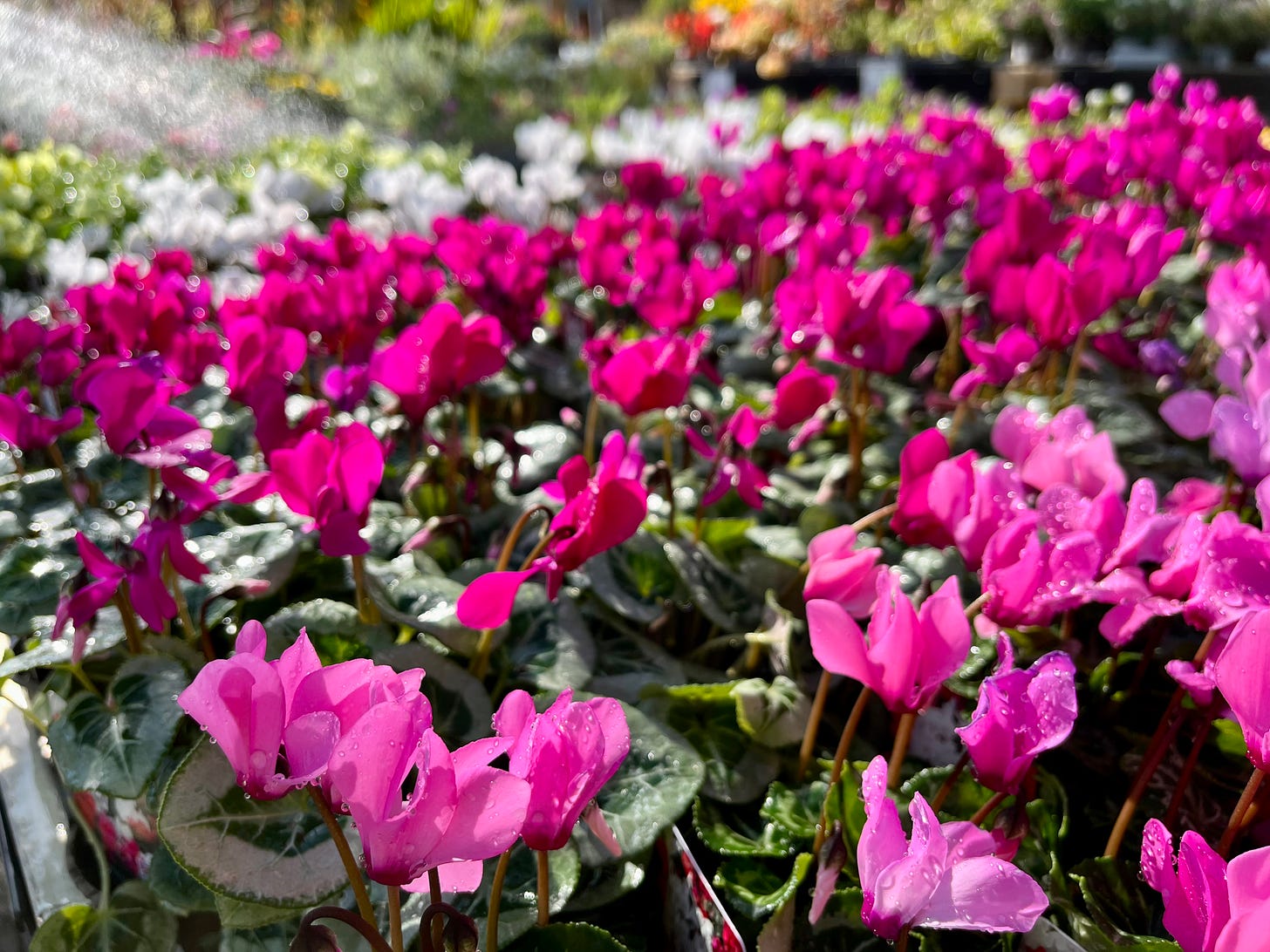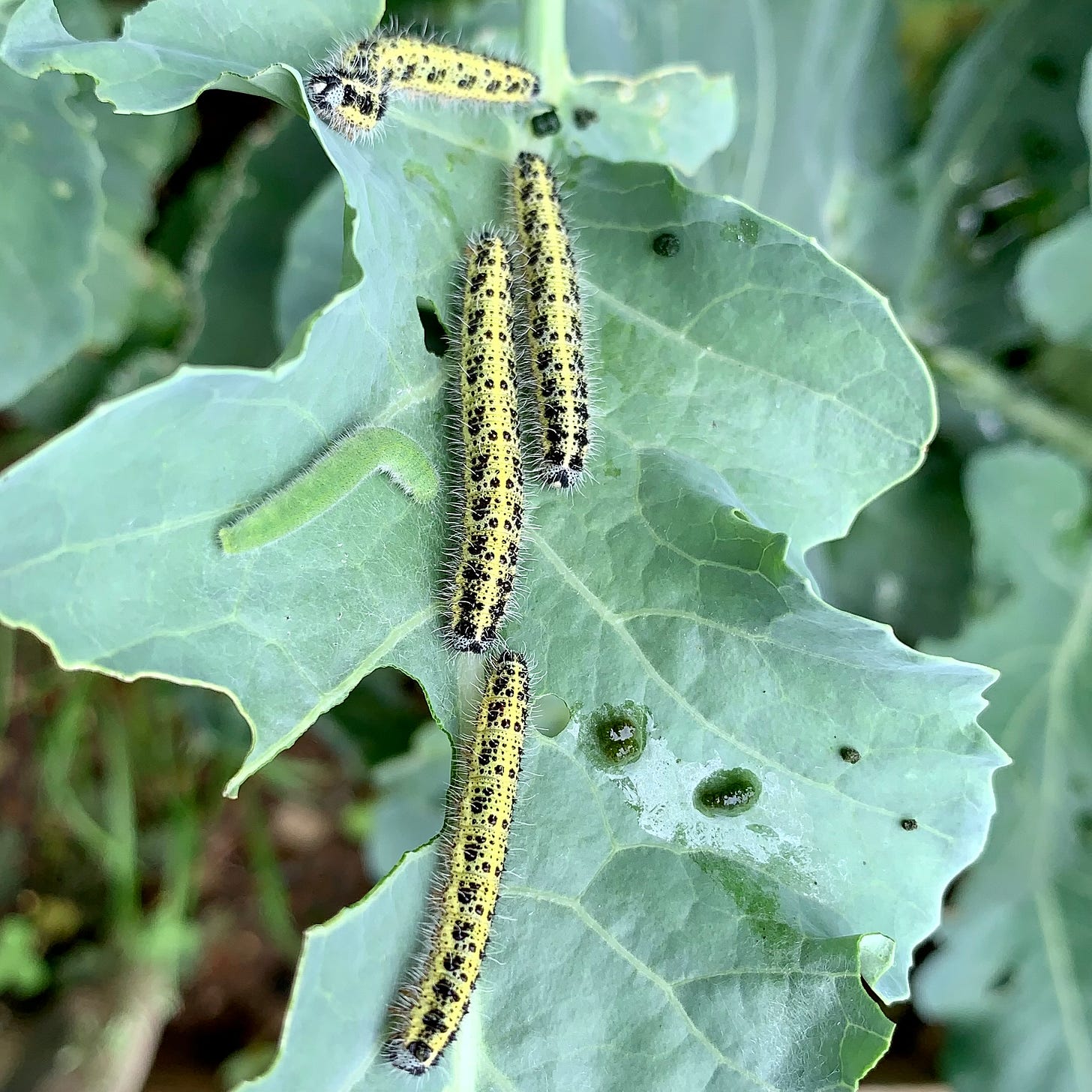Pruning and cultivation - This week in the garden
Weekly jobs to keep your gardens looking lovely all year round
Welcome back to my weekly jobs, gardeners.
As our gardens start to shut down with the coming of winter, many of our plants will become dormant to survive the colder temperatures. However, there are still a few stalwarts that refuse to let the cold get them down.
If you’re looking for a bit of colour in your garden over the winter, there are lots of plants that are very happy and will do the job nicely. Plants such as cyclamen, heathers and hellebores are beautiful and shrubs like viburnum, sarcococca and hamamelis not only look wonderful, but also have the most lovely fragrance.
Our gardens, therefore, do not need to be boring over winter. And there is also lots to do to keep them looking good. So, here are a few jobs to keep you busy in the next week to come.
Happy gardening, folks.
Deadhead cyclamen
The humble, little cyclamen flower is a gem of the autumn and winter borders. Flowering at a time when the temperatures fall and there is not a lot of colour in the garden, they brighten up the gloomy days.
The different varieties of cyclamen can be either tender or hardy, with the more tender ones also making lovely houseplants inside the home. But outdoors, they look lovely underplanted with shrubs and trees and don’t mind a little shade. Little flower carpets that can uplift our spirits.
To keep your cyclamen looking lovely, indoors or outdoors, they will just require a little maintenance in the form of deadheading. By removing the spent blooms, this will keep them healthy and happy and will encourage them to keep producing more flowers for you, keeping them blooming for longer.
To deadhead your cyclamen, take hold of a spent flowerhead, gently push down and twist the whole stem away from the base. Taking away the whole flower and stem will mean that the rot does not potentially cause damage to the tuber underground, keeping them flowering for many years to come.
Dig over bare ground
Now that winter is on its way and there is less to do in the garden with many plants becoming dormant, now is a great time to carry out a little bit of soil maintenance.
All types of soil can be used for growing and cultivation, whether that be for crops or flowers, but there is always more that we can be doing to improve it. Digging over your soil greatly benefits it and it also gives us the perfect opportunity to add some organic matter to really improve its quality. The more nutrients there are in the soil, the better your plants will grow.
By turning over the soil and leaving the soil bare over winter, the frost will do a lot of the work of breaking up the bigger clods of earth for you. Then incorporate a well rotted manure or compost to add some extra nutrients.
This organic matter will improve the structure of your soil, particularly with clay soils, as it will make it lighter and more open. It will also mean that your soil will become more moisture retentive, which will help during those long, dry summers.
Happy cultivating, gardeners.
Protect your brassicas
Growing your own brassicas, such as cabbages, kale and broccoli, can be very satisfying and rewarding. They also taste delicious when you grow your own. Problem is, though, that they also taste delicious to all the local wildlife.
Now that autumn is here and the temperatures have dropped, cabbage white butterflies, slugs and snails are starting to become less active and these are some of the main culprits going after your brassicas.
Pigeons, on the other hand, will feed on your crops all the year round and can peck through your brassicas pretty quickly. Therefore, it’s a good idea to protect your crops from these pesky pigeons.
The best way to protect them is to cover them with an insect proof netting. This will not only keep the pigeons off, but it will also stop any errant cabbage whites, who might still occasionally be flying.
Install a hoop frame over your crops to drape the netting over, or bamboo canes in each corner of your plot with upturned pots on top will also do the job nicely too.
Prune apple and pear trees
Now is the perfect time to start the annual prune of your apple and pear trees. As winter approaches, our trees start to shut down and become dormant, so it’s the optimum time for pruning certain plants.
Pruning might seem like quite a daunting task, but if you follow a few simple rules, it doesn’t have to be at all. By giving your apples and pears a good prune now, it will ensure that they stay productive and produce a good yield of fruit for you next year. If left, the trees can become congested and overcrowded and the yield will decrease as a result.
When the trees lose their leaves, this is very helpful when pruning, as it allows us to see the framework of the tree and make our pruning cuts. First, take out any dead or diseased branches and cut away any shoots from the base. Then, remove any branches that are crossing or rubbing together, as this can potentially let disease in.
Aim to create a nice, open framework of branches that rise up and away from the trunk of the tree, evenly spaced around a hollow centre.






